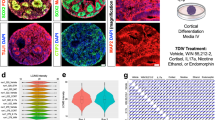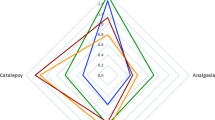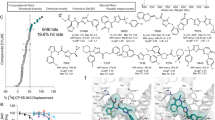Abstract
Self-administration procedures have not yet provided evidence that freely moving mice can reliably acquire and maintain an operant behavior to self-administer cannabinoid agonists. The aim of the present work was to establish a model of cannabinoid operant intravenous self-administration in freely moving mice given the relevance of this species for the use of genetically modified animals. In addition, the possible involvement of the κ/dynorphin system in cannabinoid self-administration was evaluated by using pro-dynorphin knockout mice. Outbred CD1 wild-type mice as well as pro-dynorphin knockout and wild-type mice were trained to self-administer the cannabinoid receptor agonist WIN 55,212-2 under an FR1 schedule of reinforcement. Two cannabinoid training doses (6.25 and 12.5 μg/kg/infusion) were used in the acquisition studies in outbred mice. Animals acquired a reliable operant responding to self-administer WIN 55,212-2 (12.5 μg/kg/infusion), but required as many as 15 sessions to attain this behavior. Interestingly, when a previous injection of WIN 55,212-2 (0.1 mg/kg, i.p.) was administered in the home-cage 24 h before the first session, mice acquired operant responding for cannabinoid self-administration by the fourth session. When the κ-opioid agonist antagonist nor-binaltorphimine (5 mg/kg s.c.) was administered 4 h before the first session, the time required to acquire a reliable cannabinoid self-administration was also significantly reduced. Finally, a shift to the left in the dose-intake curve to self-administer WIN 55,212-2 was observed in pro-dynorphin knockout mice when compared to wild-type mice. These results indicate that the activation of the κ/dynorphin opioid system after WIN 55,212-2 administration could counteract cannabinoid rewarding effects.
Similar content being viewed by others
Log in or create a free account to read this content
Gain free access to this article, as well as selected content from this journal and more on nature.com
or
References
Ahmed SH, Koob GF (2005). Transition to drug addiction: a negative reinforcement model based on an allostatic decrease in reward function. Psychopharmacology 180: 473–490.
Bals-Kubik R, Ableitner A, Herz A, Shippenberg TS (1993). Neuroanatomical sites mediating the motivational effects of opioids as mapped by the conditioned place preference paradigm in rats. J Pharmacol Exp Ther 264: 489–495.
Braida D, Pozzi M, Parolaro D, Sala M (2001). Intracerebral self-administration of the cannabinoid receptor agonist CP 55,940 in the rat: interaction with the opioid system. Eur J Pharmacol 413: 227–234.
Castañé A, Maldonado R, Valverde O (2004). Role of different brain structures in the behavioural expression of WIN 55-212-2 withdrawal in mice. Br J Pharmacol 142: 1309–1317.
Cheer JF, Kendall DA, Marsden CA (2000). Cannabinoid receptors and reward in the rat: a conditioned place preference study. Psychopharmacology 151: 25–30.
Cheng HM, Laviolette SR, Van der Kooy D, Penninger JM (2004). DREAM ablation selectively alters THC place aversion and analgesia but leaves intact the motivational and analgesic effects of morphine. Eur J Neurosci 19: 3033–3041.
Fallon JH, Leslie FM (1994). Distribution of dynorphin and enkephalin peptides in rat brain. J Comp Neurol 249: 293–336.
Fattore L, Cossu G, Martellota CM, Fratta W (2001). Intravenous self-administration of the cannabinoid CB1 receptor agonist WIN 55,212-2 in rats. Psychopharmacology 156: 410–416.
Ghozland S, Matthes HWD, Simonin F, Filliol D, Kieffer BL, Maldonado R (2002). Motivational effects of cannabinoids are mediated by μ-opioid and κ-opioid receptors. J Neurosci 22: 1146–1154.
Gifford AN, Bruneus M, Gatley SJ, Lan R, Makriyannis A, Volkow ND (1999). Large receptor reserve for cannabinoid actions in the central nervous system. J Pharmacol Exp Ther 288: 478–483.
Glick SD, Maisonneuve IM, Raucci J, Archer S (1995). Kappa opioid inhibition of morphine and cocaine self-administration in rats. Brain Res 681: 147–152.
Grahame HJ, Cunningham CL (1995). Genetic differences in intravenous cocaine self-administration between C57BL/6J and DBA/2J mice. Psychopharmacology 122: 281–291.
Gratton A, Wise RA (1994). Drug- and behavior-associated changes in dopamine-related electrochemical signals during intravenous cocaine self-administration in rats. J Neurosci 14: 4130–4146.
Greg JM, Small EW, Moore R, Raft D, Toomey TC (1976). Emotional response to intravenous delta-9-tetrahydrocannabinolduring oral surgery. J oral Surg 34: 301–313.
Grinspoon L, Bakalar JB (1997). Marihuana, the Forbidden Medicine. Yale UP: New Haven, CT. pp 234–252.
Hasebe K, Kawai K, Suzuki T, Kawamura K, Tanaka T, Narita M et al (2004). Possible pharmacotherapy of the opioid kappa receptor agonist for drug dependence. Ann NY Acad Sci 1025: 404–413.
Houser SJ, Eads M, Embrey JP, Welch SP (2000). Dynorphin B and spinal analgesia: induction of antinociception by the cannabinoids CP55,940, Delta(9)-THC and anandamide. Brain Res 857: 337–342.
Howlett AC, Barth F, Bonner TI, Cabral G, Casellas P, Devane WA et al (2002). International Union of Pharmacology. XXVII. Classification of cannabinoid receptors. Pharmacol Rev 54: 161–202.
Justinova Z, Tanda G, Redhi GH, Goldberg SR (2003). Self-administration of Δ9-tetrahydrocannabinol (THC) by drug naïve squirrel monkeys. Psychopharmacology 169: 135–140.
Kathmann M, Weber B, Schlicker E (2001). Cannabinoid CB1 receptor-mediated inhibition of acetylcholine release in the brain of NMRI, CD-1 and C57BL/6J mice. Naunyn Schmiedebergs Arch Pharmacol 363: 50–56.
Kuzmin A, Johansson B (2000). Reinforcing and neurochemical effects of cocaine: differences among C57, DBA, and 129 mice. Pharmacol Biochem Behav 65: 399–406.
Ledent C, Valverde O, Cossu G, Petitet F, Aubert JF, Beslot F et al (1999). Unresponsiveness to cannabinoids and reduced addictive effects of opiates in CB1 receptor knockout mice. Science 283: 401–404.
Marín S, Marco E, Biscaia M, Fernandez B, Rubio M, Guaza C et al (2003). Involvement of the kappa-opioid receptor in the anxiogenic-like effect of CP 55,940 in male rats. Pharmacol Biochem Behav 74: 649–656.
Martellotta MC, Cossu G, Fattore L, Gessa GL, Fratta W (1998). Self-administration of the cannabinoid receptor agonist WIN 55,212-2 in drug naïve mice. Neuroscience 85: 327–330.
Martin BR, Lichtman AH (1998). Cannabinoid transmission and pain perception. Neurobiol Dis 5: 447–461.
Mato S, Chevaleyre V, Robbe D, Pazos A, Castillo PE, Manzoni OJ (2004). A single in-vivo exposure to delta 9THC blocks endocannabinoid-mediated synaptic plasticity. Nat Neurosci 7: 585–586.
Narita M, Suzuki T, Funada M, Misawa M, Nagase H (1993). Blockade of the morphine-induced increase in turnover of dopamine on the mesolimbic dopaminergic system by kappa-opioid receptor activation in mice. Life Sci 52: 397–404.
Sañudo-Peña MC, Tsou K, Delay ER, Hohman AG, Force M, Walker JM (1997). Endogenous cannabinoids as an aversive or counter-rewarding system in the rat. Neurosci Lett 223: 125–128.
Schenk S, Partridge B, Shippenberg TS (1999). U69593, a kappa-opioid agonist, decreases cocaine self-administration and decreases cocaine-produced drug seeking. Psychopharmacology 144: 339–346.
Shippenberg TS, Bals-Kubik R, Herz A (1993). Examination of the neurochemical substrates mediating the motivational effects of opioids: role of the mesolimbic dopamine system and D-1 vs D-2 dopamine receptors. J Pharmacol Exp Ther 265: 53–59.
Shippenberg TS, Chefer VI, Zapata A, Heidbreder CA (2001). Modulation of the behavioral and neurochemical effects of psychostimulants by kappa-opioid receptor systems. Ann NY Acad Sci 937: 50–73.
Smart RG, Ogborne AC (2000). Drug use and drinking among students in 36 countries. Addict Behav 25: 455–460.
Soria G, Mendizabal V, Touriño C, Robledo P, Ledent C, Parmentier M et al (2005). Lack of CB1 cannabinoid receptor impairs cocaine self-administration. Neuropsychopharmacology 30: 1670–1680.
Spanagel R, Shoaib M (1994). Involvement of mesolimbic kappa-opioid systems in the discriminative stimulus effects of morphine. Neuroscience 63: 797–804.
Tanda G, Goldberg SR (2003). Cannabinoids: reward, dependence, and underlying neurochemical mechanisms—a review of recent preclinical data. Psychopharmacology 169: 115–134.
Tanda G, Munzar P, Goldberg SR (2000). Self-administration behavior is maintained by the psychoactive ingredient of marijuana in squirrel monkeys. Nat Neurosci 3: 1073–1074.
Tanda G, Pontieri FE, Di Chiara G (1997). Cannabinoid and heroin activation of mesolimbic dopamine transmission by a common μ1 opioid receptor mechanism. Science 276: 2048–2050.
Thomas H (1993). Psychiatric symptoms in cannabis users. Br J Psychiatry 147: 141–149.
Valjent E, Maldonado R (2000). A behavioural model to reveal place preference to delta-9-tetrahydrocannabinol in mice. Psychopharmacology 147: 436–438.
Vanderschuren LJMJ, Everitt BJ (2004). Drug seeking becomes compulsive after prolonged cocaine self-administration. Science 305: 1017–1019.
Van der Stelt M, Di Marzo V (2003). The endocannabinoid system in the basal ganglia and in the mesolimbic reward system: implications for neurological and psychiatric disorders. Eur J Pharmacol 480: 133–150.
Welch SP, Eads M (1999). Synergistic interactions of endogenous opioids and cannabinoid systems. Brain Res 848: 183–190.
Williamson EM, Evans FJ (2000). Cannabinoids in clinical practice. Drugs 60: 1303–1314.
Wright JW, Alt JA, Turner GD, Krueger JM (2004). Differences in spatial learning comparing transgenic p75 knockout, New Zealand Black, C57BL/6, and Swiss Webster mice. Behav Brain Res 153: 453–458.
Zimmer A, Valjent E, König M, Zimmer AM, Robledo P, Hahn H et al (2001). Absence of Δ9-tetrahydrocannabinol dysforic effects in dynorphin-deficient mice. J Neurosci 21: 9499–9505.
Acknowledgements
This work has been supported by grants from National Institutes of Health (1R01-DA016768-0111), Redes de Centros y Grupos del Instituto de Salud Carlos III (C03/06 and G03/005), Generalitat de Catalunya (2002 SGR00193), and the European Commission, VI Programa Marco (Integrated project) #OJ 2004/C164, No. 005166 (GENADDICT), and Ministerio de Educación y Ciencia #BFU2004-00920/BFI.
Author information
Authors and Affiliations
Corresponding author
Rights and permissions
About this article
Cite this article
Mendizábal, V., Zimmer, A. & Maldonado, R. Involvement of κ/Dynorphin System in WIN 55,212-2 Self-Administration in Mice. Neuropsychopharmacol 31, 1957–1966 (2006). https://doi.org/10.1038/sj.npp.1300957
Received:
Revised:
Accepted:
Published:
Issue date:
DOI: https://doi.org/10.1038/sj.npp.1300957
Keywords
This article is cited by
-
Preclinical Studies of Cannabinoid Reward, Treatments for Cannabis Use Disorder, and Addiction-Related Effects of Cannabinoid Exposure
Neuropsychopharmacology (2018)
-
Mechanisms Underlying Sex Differences in Cannabis Use
Current Addiction Reports (2017)
-
Interactions between the endocannabinoid and nicotinic cholinergic systems: preclinical evidence and therapeutic perspectives
Psychopharmacology (2016)
-
New operant model of reinstatement of food-seeking behavior in mice
Psychopharmacology (2011)
-
The role of the dynorphin–κ opioid system in the reinforcing effects of drugs of abuse
Psychopharmacology (2010)



